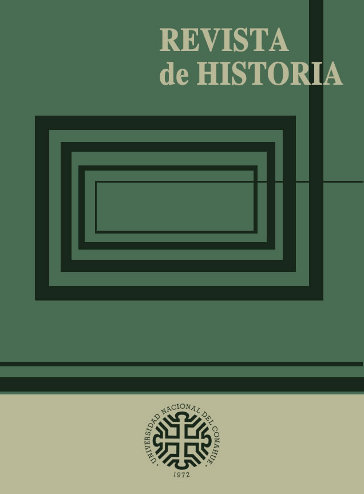El PRT-ERP en el exilio. Armas, comunismo y derechos humanos.
Palabras clave:
prt-erp, exilio, comunismo, latinoamericanismo, humanosResumen
Las intervenciones de diverso tipo que han tenido al PRT-ERP como objeto se han restringido al período que culmina con el golpe de Estado del 24 de marzo de 1976 o con la muerte del máximo líder partidario, Mario Roberto Santucho (19 de julio de 1976). La historia posterior de la organización que es, en gran medida, la historia de una ruptura que sobreviene a comienzos de 1979, no ha sido estudiada. Sin embargo, tanto las reorientaciones no siempre inteligibles de prácticas políticas y filiaciones ideológicas como el recorrido posterior de los grupos que resultaron de dicha ruptura constituyeron la base de experiencias históricas relevantes tanto en el plano internacional como en el nacional. Dosgrupos de fronteras definidas se distinguieron tras el cisma partidario de 1979: uno liderado por Enrique Gorriarán Merlo y uno nucleado en torno a Luis Mattini, que mantuvo el nombre de PRT. Estos grupos trazan con sus respectivas reorientaciones la amplitud de una distancia que se inscribe entre la actividad armada en tierras latinoamericanas, por un lado (grupo de Gorriarán Merlo), y el eurocomunismo, por el otro (PRT liderado por Luis Mattini). Entre ambos, se configura un espacio de fronteras mucho más móviles, difusas y extendidas en el tiempo: el del movimiento de derechos humanos. El presente artículo aborda la actividad política partidaria en los primeros tiempos del exilio así como la historia de aquel proceso de ruptura, analizando las variables que determinaron las filiaciones individuales, entre las que se destacan las sensibilidades frente a las opciones políticas que abría el espacio internacional.
Descargas
Descargas
Publicado
Cómo citar
Número
Sección
Licencia
Nota de copyright
Obra disponible en acceso abierto bajo licencia Creative Commons Atribución-
NoComercial-SinDerivadas 2.5 Argentina (http://creativecommons.org/licenses/by-nc-nd/2.5/ar/)








